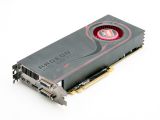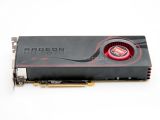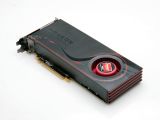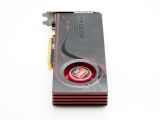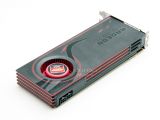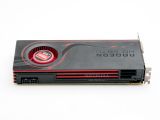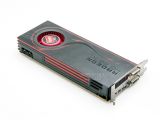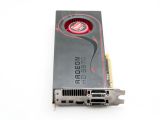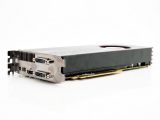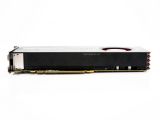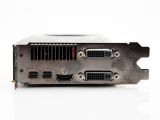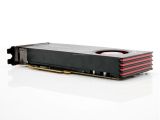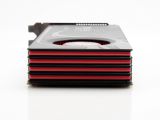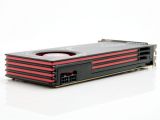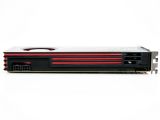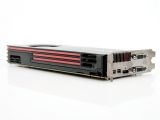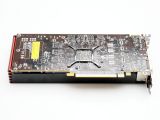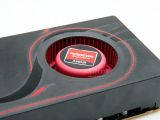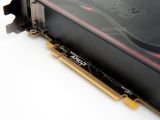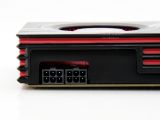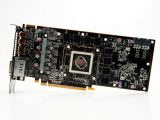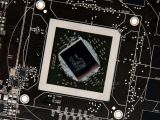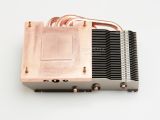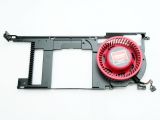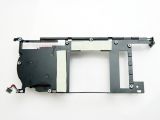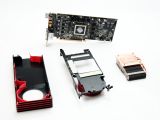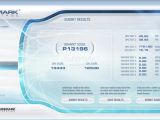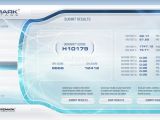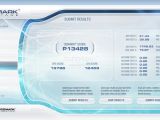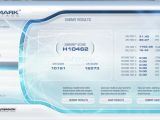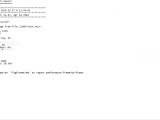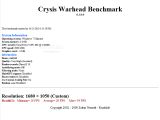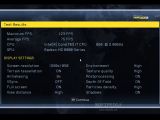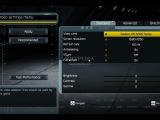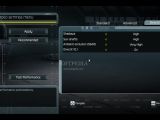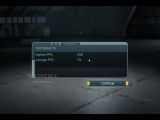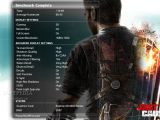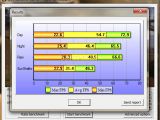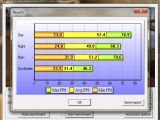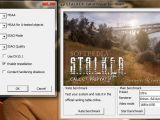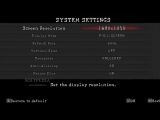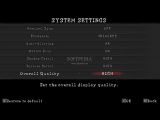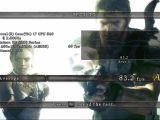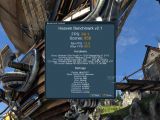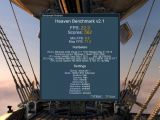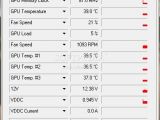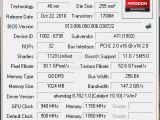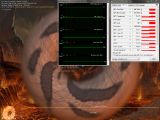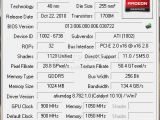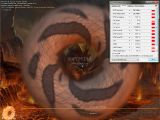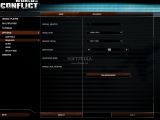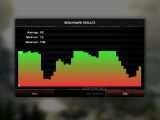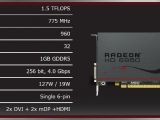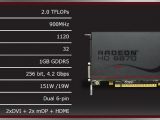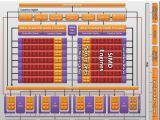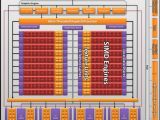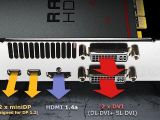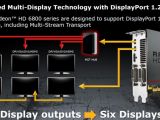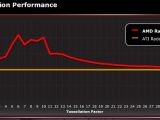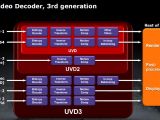You have seen the photos, you have read all the leaked specs that came until now, but today it's time to take a in-depth look at AMD's next generation graphics cards, the HD 6800 making its way into our labs in order to be put through our extensive GPU gauntlet.
However, before starting things off, there is one small thing that you must know, although I am sure that many of you have already heard it before.
I am talking about AMD's new naming scheme, this brand new HD 6800 not coming as a replacement for the previous HD 5800 enthusiast graphics card line, but as a replacement for the HD 5700 series, the Barts GPU that is featured inside the HD 6870 and HD 6850 coming as a performance part in AMD's graphics product line.
Why AMD went with this naming scheme when it built its new graphics card family is beyond me, although I can certainly see why the Sunnyvale based company choose the Barts GPU to debut its second generation DirectX architecture since the GTX 460 managed to leave quite a dent in AMD's graphics cards offering.
So, the HD 6870 and HD 6850 were born, destined to take on Nvidia's GTX 460 fully on, while being based on the previous HD 5800 graphics cards series although, this time, we get an performance optimized design with improved functionality.
That is all that I am gonna tell you for now since we are going to take a closer look at Barts architecture on the following page to see how is this different in regards to the previous generation Cypress based GPUs and how has AMD managed to improve performance while using the same 40nm manufacturing process used for the Evergreen series.
Price has also been trimmed down, the HD 6850 coming in as low as $179.99, while is older brother is priced at $239.99, so the HD 6850 falls right between the $170 priced GeForce GTX 460 768MB and the GeForce GTX 460 1GB that is available for $200, while the HD 6870 sits between the latter and the GeForce GTX 470 that recently had its priced dropped to $260.
Performance wise, since this is AMD second generation DirectX architecture, I am expecting some improvements on the tessellation front, since it was lagging behind Nvidia in this regard, although AMD has also prepared a bunch of other cool features for us to gaze upon as well as an important performance increase over to the older HD 5700 graphics series.
More on that in the next part of our review as we move on to detailing the Barts architecture as well as our test system and benchmark suite.
Hardware Specifications and Testing Methodology
Since this is the first time we lay eyes on AMD's second generation DirectX 11 graphics cards we are going to take a closer look at its architecture, focusing on what it does differently then the previous Cypress chips this is based upon while also taking a quick look at all the features that AMD packed inside these new GPUs.
But, before we do so, we are going to take a quick look at the two cards that AMD is launching today, in order to see where do the differences between the two lie, so I will start things off by detailing the specs of the latest Radeon's to hit the party.
AMD Radeon HD 6870 GPU
Compute Power: 2.0 TFLOPs Core Clock Speed: 900MHz Stream Processors: 1120 ROP Count: 32 Frame buffer: 1GB DDR5 Memory Width: 256bit Memory Speed: 4.2Gbps Load Board Power Consumption: 151W Idle Board Power Consumption: 19W Power Connectors: Dual 6-pin Display Outputs: 2xDVI, 2x mDP, HDMI
AMD Radeon HD 6850 GPU
Compute Power: 1.5 TFLOPs Core Clock Speed: 775MHz Stream Processors: 960 ROP Count: 32 Frame buffer: 1GB DDR5 Memory Width: 256bit Memory Speed: 4.0Gbps Load Board Power Consumption: 127W Idle Board Power Consumption: 19W Power Connectors: Single 6-pin Display Outputs: 2xDVI, 2x mDP, HDMI
As you can see from the above specifications these two GPUs are pretty much the same apart from the stream processor count and operating frequencies, the HD 6850 being definitely slower then its older brother.
However this is only the tip of the iceberg and in order to get a better understanding on how these solutions actually work we need to dig deeper into Cypress and Barts architecture to see where to these graphics cards get their power from.
Moving down to the most basic level of the Barts architecture we find the streaming processor units, an arithmetic logical unit, these being grouped together in whats called a streaming processor (SP), 16 forming a SIMD block together with texturing units, L1 cache, a shared memory and control logic.
This is basically how the Radeon GPU was build ever since the RV770 days (the GPU that was used in the HD 4870, remeber), although the number of SIMD units has been increased over time, the SPs also suffering some modifications from one generation to the other.
However, this isn't the case this time since the HD 6870, as well as the HD 6850, feature fewer SIMD blocks then the Cypress GPUs these are based upon.
Compared to the 18 SIMDs used in the original HD 5850, the 6870 uses 14 such units, while the HD 6850 drops this number further down to 12.
As before, each SIMD unit is made up of 80 SPs, the L1 cache size as well as the number of texture units per SIMD block remaining unchanged.
What AMD has done differently however, at Barts' SPU level, is that it dropped FP64 support in order to make the GPU a lot simpler without sacrificing gaming performance, since 64-bit floating point calculations are needed mostly when it comes down to GPU computing tasks (such as video transcoding).
Taking a good look at the Barts' GPU however, does reveal us an interesting fact since compared to the Cypress core this new graphics processing unit splits the Ultra-threaded Dispatch Processor into two separate units, each with its very own instruction and constant caches, one of these being fed data by a rasterizing unit and a geometry assembling unit while the other gets its data from a vertex assembler and from a second resterizer present in the Barts GPU.
But is this change enough to justify AMD's claims that Barts comes out over the HD 5850 when it comes down to gaming performance?
Well, it most certainly isn't, but there are a few other changes in the Barts core that explain how did AMD managed to get past the performance level of the previous generation HD 5850 while also using a much smaller core.
This changes were performed at the rasterizing level of the GPU, since Barts uses improved resterization and tessellation units, as well as retaining the same number of ROPs as Cypress (32 that is), although they have been also improved, so this is where the HD 6850 and HD 6870 draw their power from.
As you can see from the graph provided by AMD in regards to the tessellation performance of their Barts GPUs compared to the Cypress core, the performance increase isn't huge, reaching 2x only in a very limited number of situations when lower tessellation factors are being used.
Diving deeper in the Barts architecture we find a simplified 256-bit memory bus as well as a new UVD3 unit that is now capable of decoding the multi-view codec (used by 3D Blu-ray movies) as well as MPEG-2 and MPEG-4 Part 2 that is used by the DivX and xVid codecs.
And yes, you read that right, we do actually get stereoscopic 3D support, AMD coming with its own “Open Stereo 3D Initiative” in response to Nvidia's 3D Vison technology, that takes quite a different approach to 3D since it allows its partners to come up with their own solutions such as monitors and glasses.
A number of manufacturers have already jumped on board and is now possible to get special 3D conversion and 3D playback software as well as monitors and glasses from the likes of Arcsoft, Corel, CyberLink, iz3D, LG, Samsung, Viewsonic, Xpand and others.
As well as 3D support, AMD also added a new Anti-Aliasing mode to the 6800 series, called Morphological Anti-Aliasing (MLAA).
Although this method of performing AA is not that common in the PC market, consoles have been using it for a while now since it isn't especially demanding and works quite well, even though it can't achieve the same results as MSAA since it is applied after the image has been already drawn by the GPU using an algorithm that detects high-contrast areas and tries to blend them in order to remove aliasing.
Since this kind of wraps the Barts architecture we are going to take a closer look at the board now as well as put it trough it paces in order to see how it performs in our benchmarking suite.
But before moving on, let's take a quick look at our testing rig as well as the games and benhmarking tools used for today's review.
Test System and Benchmarks Used:
Intel Core i7 860 2.8GHz processor Gigabyte P55A-UD4 motherboard AMD Radeon HD 6870 4GB Kingston DDR3-1333MHz memory Western Digital Caviar Black 500GB SATA hard drive Integrated Audio and Network Windows 7 Ultimate 32-bit Operating system AMD Catalyst 10.10 (RC4)
3DMark Vantage Unigine Heaven 2.1 Crysis Warhead World in Conflict Resident Evil 5 Just Cause 2 Tom Clancy's H.A.W.X. Tom Clancy's H.A.W.X. 2 S.T.A.L.K.E.R. Call of Prypiat
Design and Real-Life Performance
Since most HD 6870 that are available out there are basically a restickered AMD reference card the following results hold true for all the stock clocked 6870 graphics cards although overclocking results may vary from one GPU to another.
What you first notice about the HD 6870 when you pick it up for the first time (apart from its unattractive brick like design) is that it gained in size compared to the HD 5770 it replaces, this Barts based graphics card measuring about 9.65 inches (or 24.5 cm) in length compared to the 8.1875 inches (20.8 cm) of the previous generation.
Moving on with our visual inspection of AMD's graphics card we find that it features a similar shroud to that of the HD 5800 series, hot air being expelled via a half-height grill placed at the back of the card, while the two PCIe 6-pin power connectors are placed on top side, similarly to the HD 5870 and HD 5850.
Apart from the fan vent, the bracket comes with two mini DisplayPort connectors, two DVI ports as well as a HDMI output.
Although this sounds pretty feature complete, AMD has updated both the mini DisplayPort and HDMI connectors to their latest standards 1.2 and 1.4a, respectively, DisplayPort 1.2 bringing some interesting features to the mix such as the capability of daisy-chaining up to 3 monitors per port (so you can build a 6 display EyeFinity system with just a HD 6870 or HD 6850 graphics card) while also coming with 120Hz 3D support for 2560×1600 monitors.
The HDMI 1.4a standard also supports 3D stereo gaming (although it is limited to 1080p resolutions) while the two DVI ports provide a Dual-Link output as well as a Single Link one.
Since this pretty much concludes our visual inspection of the board, we are going to take a look at the cooling solution used by AMD for the HD 6870 as well as the chip and PCB itself.
As you can certainly see, AMD used a pretty decent cooling system for the HD 6870, the copper plate that covers the GPU coming with three heatpipes that move the heat away from the core and into a aluminum heatsink, this being cooled by a 70mm turbine fan.
The memory chips are also cooled thanks to some thermal pads that make contact with the aluminum frame of the HD 6870 so these should come with a pretty decent overclocking headroom.
As for the PCB itself, we can see the Barts core that sits right in the middle of the board, flanked by eight memory chips, the GPU using a four phase PWM circuit in order to get it's power, other two VRMs being also present on the board's right side.
Just as a side note, AMD says the Barts GPU is pin-compatible with Cypress so manufacturers could use HD 5850 PCBs in order to build their HD 5870 graphics cards, although I don't actually think anyone would do that since Barts can make do with a 6 layer PSB while Cypress uses a more expensive eight layer design.
With this out of the way, it's time to stick the HD 6870 inside our testing rig and see how AMD's second generation DirectX 11 graphics card performs.
We put the card trough much the same steps as other graphics cards that made their way into our testing lab, although, this time, we choose to add H.A.W.X. 2 to the party in order to provide you with a complete reference set for judging this cards performance.
As you can see, the HD 6870 performed admirably in our benchmark suite managing to handle virtually every game we thrown its way, Anti-Aliasing being used at all times since we were limited to a 1680x1050 display.
Full HD resolution monitors (1920x1080) shouldn't be a problem either since we got really high on those Anti-Aliasing settings, Crysis Warhead being the only game that proved to be a problem for the HD 6870, AA being disabled in order to get a fluid gaming experience although we did used the highest quality settings available in the game.
Since AMD said it used an improved tessellation unit for the Barts series GPUs (featuring better thread management and buffering) we decided to put those claims to the test and so we settled for the Heaven 2.1 benchmark that makes heavy use of tessellation, setting this both to Normal and to Extreme levels in the benchmark launcher application.
As you can see the frame rates returned are actually higher that what we have come to expect from AMD graphics cards that target the performance sector, although I am under the impression these are actually lower then what we would actually see from the GTX 460.
I will make sure to put this claim to the test if Nvidia is gracious enough to send a GeForce GTX 460 our way for testing since this would surely be an interesting comparison.
Since we can't do this right now, I will leave you to take another look at HD 6870 performance before moving on to the overclocking part of our testing.
Since this is a new architecture I didn't knew what to expect form the HD 6870, but I have to admit that I am pretty disappointed by the results, since we ended up with quite a low frequency for the GPU, way beyond what I am accustomed in seeing in todays graphics cards.
The memory performed a lot better though, especially if you consider that Barts uses a simplified version of Cypress' memory controller that isn't tuned for high frequencies, managing to get as high as 1150MHz, 100MHz more then its stock clock.
Although I can't certainly state that this is the case, the limited overclocking potential of the HD 6870 leads me to believe that AMD has pretty much topped the maximum frequencies available to their Cypress architecture built on the 40nm manufacturing process.
More voltage could have helped us in our overclocking endeavors, but, when this article was written, there was no application available that had overvoltage support for the HD 6870, MSI's Afterburner tool lacking this option.
Taking a quick look at the numbers returned by our overclocked HD 6870 we don't get to witness an impressive increase in performance (that was pretty much expected considering the core frequencies that were reached by the 6870), although we do actually get slightly improved numbers across the board.
With overclocking out of the way, the next step was to see how the HD 6870's cooling system performs, so we fired up FurMark to see how high the operating temperatures would go from the 39.5 degrees Celsius that were experimented with the board remaining idle.
As you can see for yourself, this graphics card settled in at about 75 degrees Celsius while the minor overclock that we achieved raised this up by a slight 3 degrees Celsius, so no worries in this department.
AMD's cooling solution also proved to be pretty silent throughout the testing, both overclocked and stock, although you could certainly hear it in our open testbed.
However, the noise could not be described as irritating by any means, the HD 6870 proving to be really well behaved.
Conclusions
Now that you have seen the numbers it's time to draw our conclusion regarding the Radeon HD 6870 graphics card, that we took a look at today, as well as regarding AMD's second generation DirectX 11 architecture.
Overall Impressions
First of all let me start this by saying how disappointed I am in AMD for choosing to change its naming scheme and calling these new Barts GPU's the HD 6800 series since all this will manage to do is to create confusion among unwary consumers.
Don't get me wrong, AMD isn't the only one to go this route, Nvidia being really hard to surpass in this regard, but I don't think that anyone gets a special kick out of staying up to date with confusing naming schemes.
But let's go past this and move to the actual board, AMD managing to do a great job even though it had to use the same 40nm manufacturing process for its brand new Northern Islands architecture, that Barts is making part off, since it manged to offer quite an impressive jump in performance while also bringing new features to the mix.
But all these features don't count for much if the pricing is wrong and AMD definitely got this right too since the HD 6870 manages to offer quite a decent amount of performance for $240, although you could certainly argue that $20 more would get you an GTX 470 that should prove to be faster then the HD 6870.
The Radeon HD 6870 however, comes as the more feature complete card since its six-monitor EyeFinity support as well as the new Morphological Anti-Aliasing really add some value to AMD's offering, although this pretty much comes down to personal preference and how are you planning on using your newly acquired graphics card.
Power consumption is also on AMD's side since the HD 6870 draws “only” 151W when fully loaded compared to the 160W specified by Nvidia for the GTX 460 or the whopping 215W maximum graphics card power of the GTX 470, AMD's reference solution also being pretty quiet.
Wrapping things up, I can say that I am certainly impressed by the performance improvement that AMD managed to squeeze out of its Cypress core without using a new manufacturing process.
This, together with all the features that AMD added to the Barts series of graphics cards, certainly makes the HD 6870 an interesting option if you are searching for a new video card and don't want to wait until November when AMD will introduce its even higher-performing Northern Island based GPUs.
The Good:
- Improved performance - Quiet operation - 6 monitor EyeFinity support - Improved tesselation unit - DisplayPort 1.2 compatible - Improved UVD3 unit - 3D Support - Morphological Anti-Aliasing
The Bad:
- AMD's New Naming Scheme - Limited overclocking headroom - Lengthier then the previous generation HD 5700
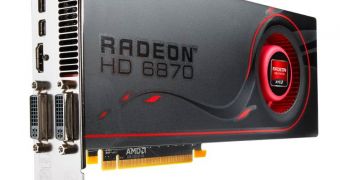
 14 DAY TRIAL //
14 DAY TRIAL // 
